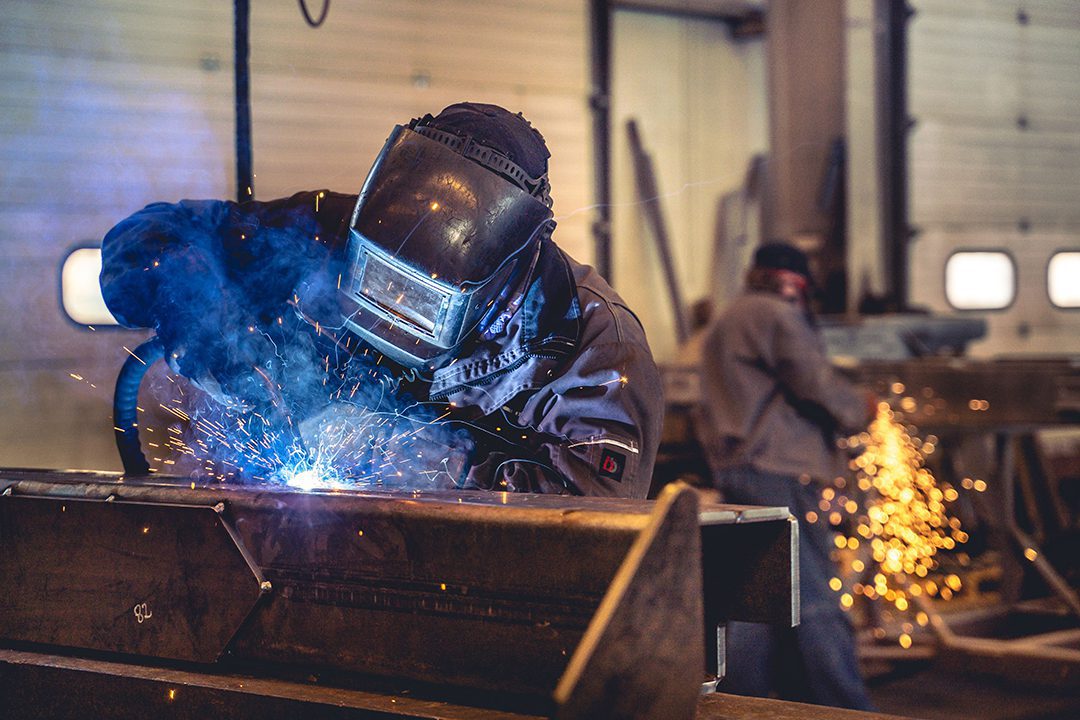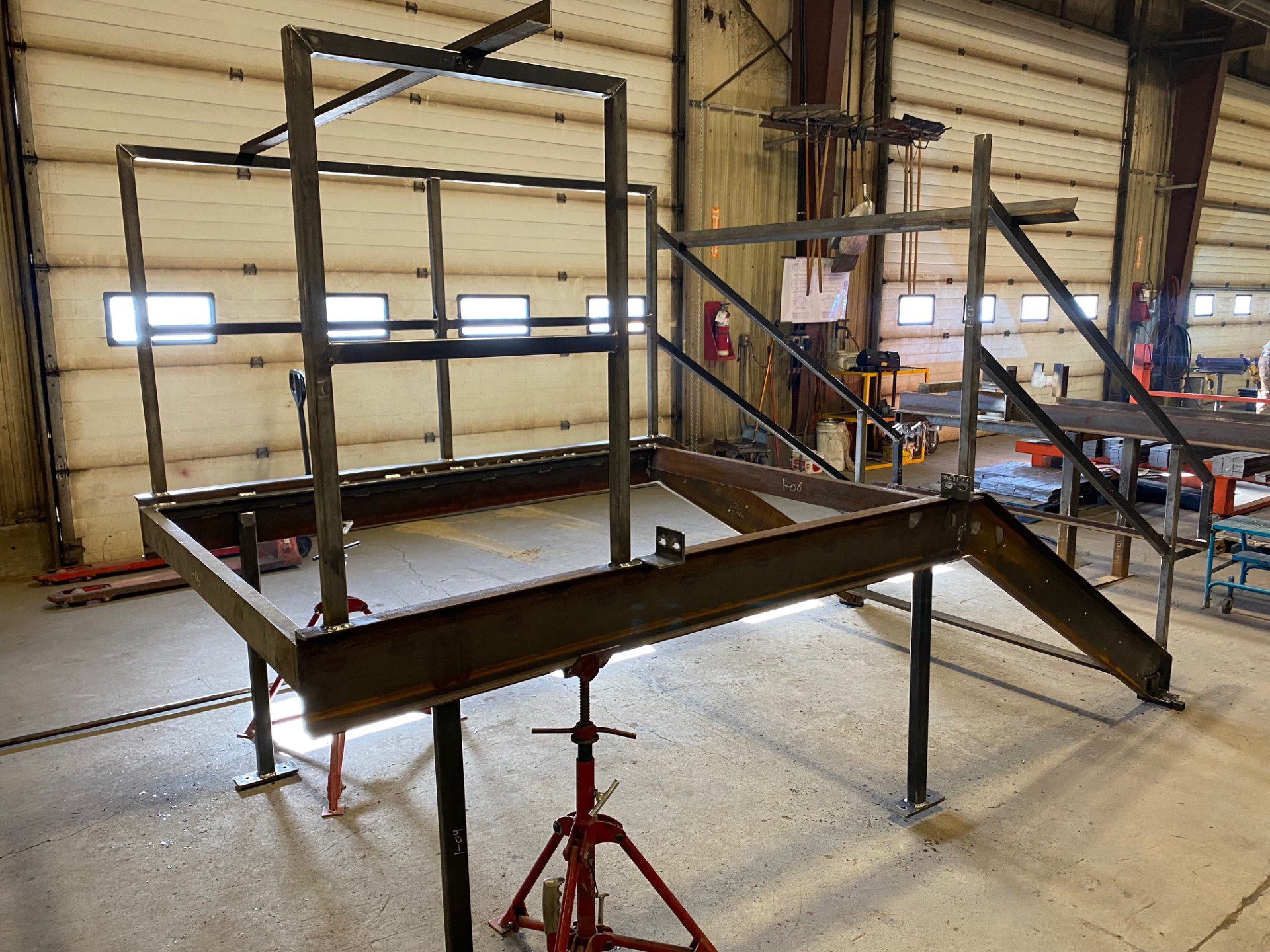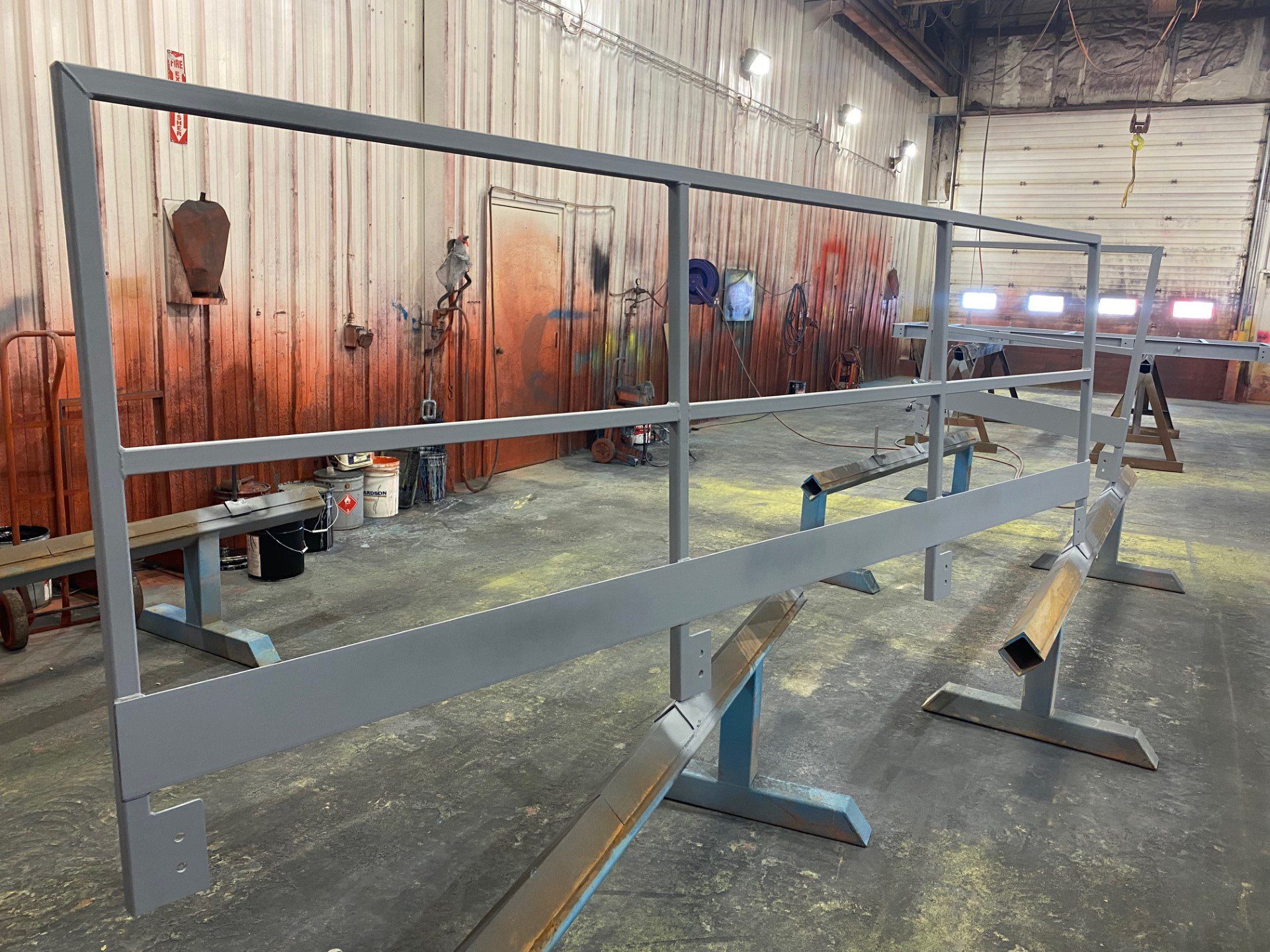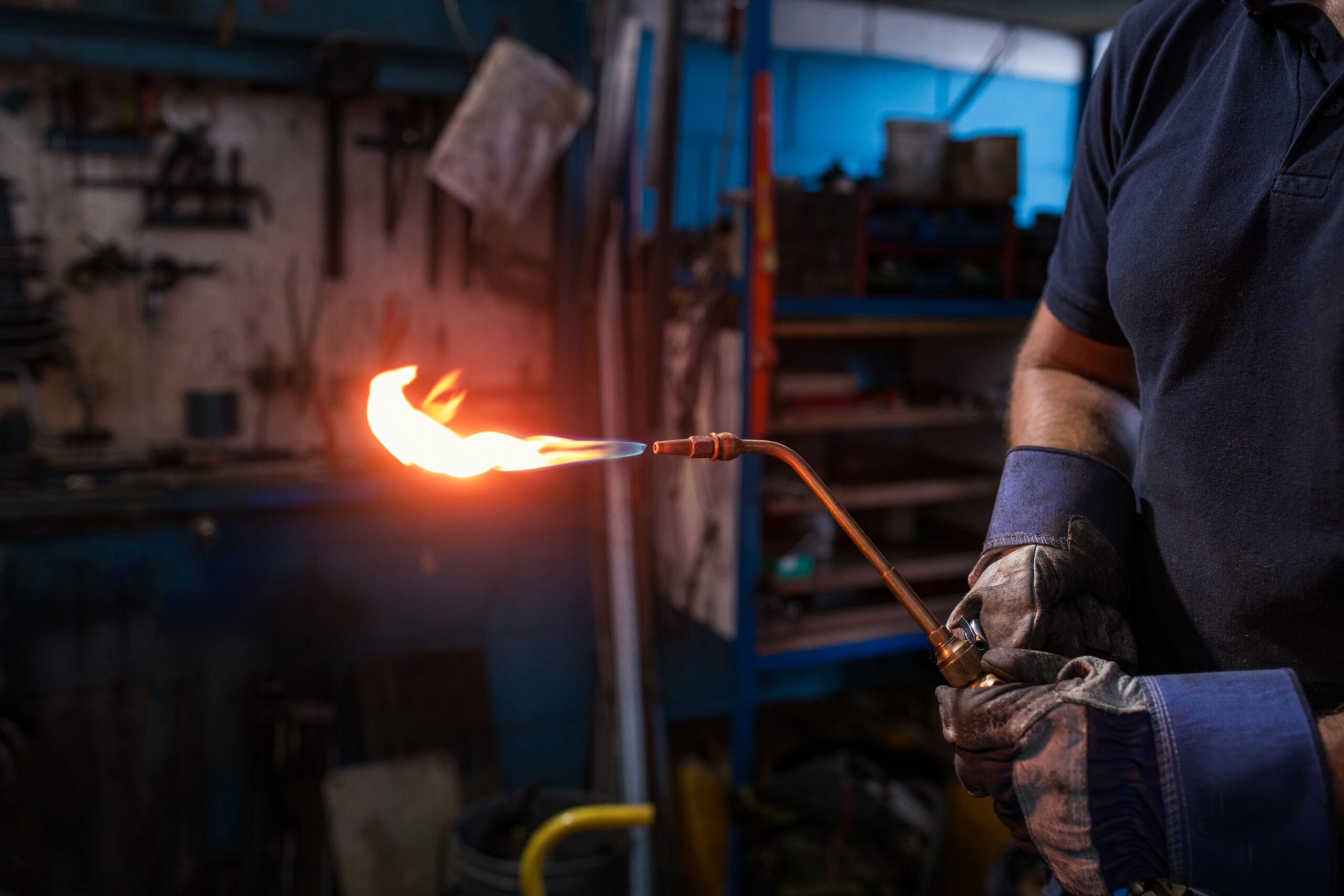Understanding the Basics of Structural Welding in Construction

In the dynamic landscape of construction, welding plays a pivotal role in ensuring the integrity and durability of structures. At the heart of this process lies a set of fundamental principles that form the foundation of every welded structure. Today, we’re going to delve into the nuances of structural welding, examining its importance, processes, safety measures, and its integration into the design of construction projects.
Understanding the Importance of Structural Welding
Welding plays an important role in structural fabrication and construction, involving the fusion of metals to create a cohesive and resilient framework. In the context of commercial projects, the significance of structural welding cannot be overstated. Welding allows metals to be shaped and formed and creates the structural backbone of skyscrapers, bridges, grain elevators, commercial buildings, and other large-scale structures, providing the strength needed to withstand the test of time. Without proper welding techniques, the structural steel used in the construction process would not be able to withstand the immense loads and forces it is exposed to.
Fundamentals of Structural Welding
Basic Principle of Welding
At its core, welding is a fabrication process in which two or more parts are fused together by means of heat, pressure, or both, forming a joint as the parts cool.
The fundamental principles of structural welding are crucial to ensure the safety, integrity, and durability of the structures being built. Here are the key fundamentals of structural welding:
Material Selection
The choice of materials is a critical aspect of structural welding. In commercial construction, where structures are subjected to diverse environmental conditions, selecting the right material is paramount. Additionally, knowledge of welding electrodes and filler metals is important for achieving the desired strength and durability in the welded joints.
- Types of Metals Used in Commercial Construction:
- Steel: Widely used for its strength and versatility, steel is a staple in commercial construction.
- Aluminum: Known for its lightweight properties and corrosion resistance, aluminum is often employed in various structural components.
- Stainless Steel: Recognized for its corrosion resistance and aesthetic appeal, stainless steel is used in applications where durability and appearance are important.
- Welding Electrodes and Filler Metals:
- Welding Electrodes: A welding electrode is used to conduct current through a workpiece to fuse two or more parts together. Depending upon the process, the electrode is either consumable, in the case of gas metal arc welding or shielded metal arc welding, or non-consumable, such as in gas tungsten arc welding.
- Filler Metals: Filler metal is supplied to the joint to be welded from an electrode that is consumed in the arc by the welding process, typically Shielded Metal Arc welding (SMAW), Gas Metal Arc welding (GMAW) or Flux Cored/Metal Cored welding (FC/MCAW). It can also be supplied to the joint as a simple filler wire that is not electrically connected as in Gas Tungsten Arc welding (GTAW) and Plasma Welding (PAW). These materials improve the weld's mechanical properties and ensure a strong connection.
Welding Processes
Structural welding may use different welding processes, including Shielded Metal Arc Welding (SMAW), Gas Metal Arc Welding (GMAW/MIG), Flux-Cored Arc Welding (FCAW), and Gas Tungsten Arc Welding (GTAW/TIG). The selection of the welding process depends on factors such as material type, thickness, and the specific requirements of the project.
- Shielded Metal Arc Welding (SMAW)
-
- SMAW, commonly known as stick welding, is a versatile process widely used in commercial construction. Its simplicity and applicability make it a popular choice for welding structural components, while its reliability provides a strong and stable connection.
- Gas Metal Arc Welding (GMAW)
-
- GMAW, or MIG welding, is known for its efficiency and speed. In commercial projects, where time is often of the essence, GMAW finds its place in welding tasks that require precision and speed without compromising on quality.
- Flux-Cored Arc Welding (FCAW)
-
- FCAW, a variation of MIG welding, utilizes a consumable wire with a flux core composed of alloys and deoxidizers which protect the weld pool from contaminates and increase deposition rates (when compared to GMAW). The higher deposition rates and cleaning properties make it suitable for large-scale commercial projects.
Welding Procedure Specifications (WPS):
WPS provides detailed instructions for welding a specific joint under certain conditions. It includes information on welding processes, materials, joint design, preheat and interpass temperatures, welding parameters, and post-weld heat treatment (if required). Following approved WPS is crucial to ensure consistent and high-quality welds.
Joint Design:
The design of the joint determines how two or more pieces of metal are connected. Common joint types in structural welding include butt joints, fillet joints, lap joints, and T-joints. The joint design influences the welding technique, filler material, and overall strength of the weld.
Preparation and Fit-Up:
Proper preparation of the joint surfaces is essential for achieving quality welds. This includes cleaning the metal surfaces, ensuring proper fit-up of the pieces to be welded, and maintaining the correct gap and alignment between them.
Welding Positions:
Structural welding may involve welding in various positions, including flat, horizontal, vertical, and overhead. Welders need to be skilled in welding in different positions to meet the demands of the specific structural components.
Quality Control and Inspection:
Structural welding requires stringent quality control measures. Inspections are conducted during and after welding to ensure compliance with specified standards and codes. Non-destructive testing methods, such as ultrasonic testing and radiographic testing, may be used to assess the integrity of the welds.
Safety:
Safety is paramount in structural welding. Welders must use personal protective equipment (PPE), follow safety protocols, and be aware of potential hazards associated with welding, such as fumes, arc radiation, and electrical hazards.
Documentation and Certification:
Proper documentation of welding procedures, inspections, and certifications is essential for regulatory compliance and quality assurance. Welders may need to be certified to perform certain types of structural welding, and procedures must be documented and approved.
By adhering to these fundamental principles, structural welders can contribute to the construction of safe, reliable, and durable structures that meet engineering standards and regulatory requirements.
Welding in Commercial Building Design

Successful structural welding begins in the design phase of a commercial building. Collaboration between architects and engineers is essential to ensure that the welding requirements are seamlessly integrated into the overall design. This collaborative approach allows for the creation of structures that are not only robust but also aesthetically pleasing.
Beyond its functional aspects, structural welding offers opportunities for artistic expression. In commercial construction, where architectural innovation is celebrated, welding can be customized to incorporate artistic elements, adding a unique touch to the structural components.
Best Practices for Ensuring Quality and Safety in Structural Welding
To ensure the highest quality and safety standards in structural welding, several best practices should be followed. These include:
- Competent and qualified welders who are knowledgeable about the welding techniques and processes specific to commercial construction.
- Regular inspections and testing of welds should be conducted to identify any defects.
- The use of proper personal protective equipment (PPE) to protect welders from the hazards associated with welding, such as UV radiation, sparks, and fumes.
- Adequate ventilation and extraction systems to minimize exposure to welding fumes.
- Adhering to industry standards and regulations, such as those set by the CSA Group, to ensure quality and safety in structural welding.

The Future of Structural Welding in Commercial Construction
As technology continues to advance, the future of structural welding in commercial construction looks promising. Automation and robotics are already making their way into the welding industry, enabling faster and more precise welding processes. Robotic welding systems can be programmed to perform repetitive tasks, increasing productivity and reducing human error.
Advancements in materials science are leading to the development of stronger and more lightweight alloys, which will further enhance the efficiency and sustainability of structural welding in commercial construction. With these advancements, the construction industry can expect improved quality, increased productivity, and enhanced safety in structural welding.

Structural welding is an integral part of commercial construction, ensuring the strength, stability, and safety of buildings. By following industry standards, employing qualified welders, and embracing technological advancements, the future of structural welding in commercial construction looks promising.
Contact Flynn Bros Projects today to learn more about our expertise in structural fabrication and how we can assist you in your commercial construction projects.
Stay Connected with Us!
Follow us on our social media channels to get the latest updates, exclusive offers, and behind-the-scenes content. Join our community and be part of the conversation!
